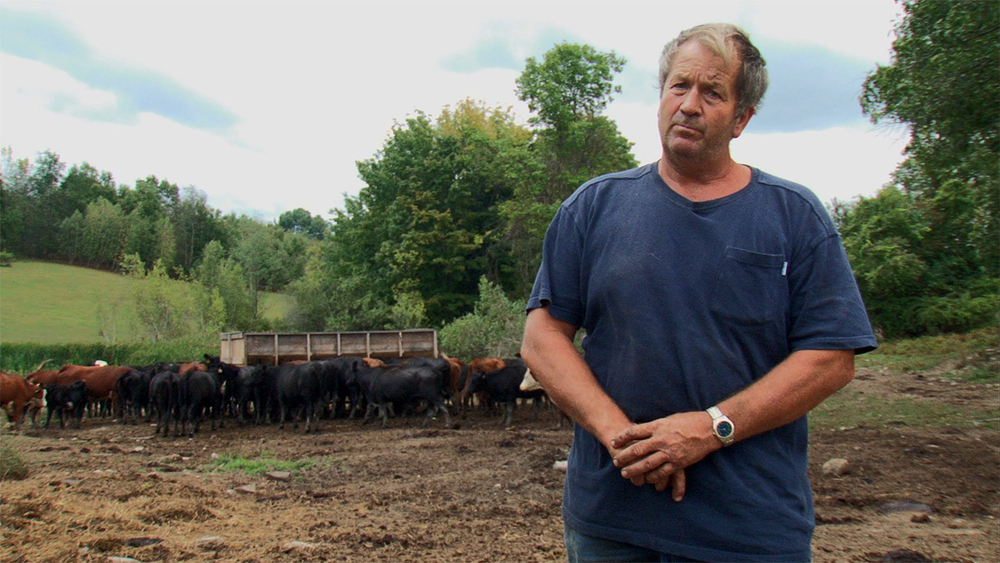If you’re from a city, the word “cooperative” might conjure up visions of dreadlocked cashiers slinging bulk quinoa. And if you’re from the country, you might think co-ops are akin to socialism. That’s the reaction Sarah Teale got from some New York state farmers when she was looking to start the Adirondack Grazers Cooperative.
But if you’ve ever grated a little Tillamook cheese, cooked up some Ocean Spray cranberries, indulged in Organic Valley sour cream, or even chugged a Sunkist soda, you’ve eaten food from a cooperative. There are nearly 3,000 agriculture cooperatives in the U.S., and they support just about every type of crop, product, or aspect of farming.
[grist-related-series]
Cooperatives are owned and operated by members who share in any profits or benefits. Farm cooperatives run the gamut from huge organizations with regional offices, farmer-elected representatives, and national brands to small collectives of 15 farmers who meet in a church basement when it’s time to talk about their locally marketed pork. They face unique challenges at the extremes: As they get larger, cooperatives struggle with bureaucracy and uninvolved or dissatisfied members; as they get smaller, they might just have to fight to stay afloat at all.
The Adirondack Grazers Cooperative is a compelling example of the latter. In a bid for better economic options and more stability, a dozen farmers started this New York state beef cooperative in 2012. By forming within an afternoon drive of one of the world’s biggest food destinations, the co-op’s founding farmers figured they’d find plenty of NYC restaurants clamoring to sell local beef.
Not so much. The film Grazers documents the cooperative’s rocky start. Watch the trailer:
[vimeo https://vimeo.com/109949277]It didn’t take long for the rag-tag group of farmers — who include local food advocates and salt-of-the-earth ranchers — to run up against a swath of problems. The cooperative struggles to land orders, work with distribution companies, keep managers, and (not least of all) keep their collective cool.
“Banding farmers together is like herding cats,” says farm business educator Sandy Buxton in the film as farmers quibble over the small but crucial details — like whether to sell meat fresh or frozen, or how to decide whose cows to slaughter next.
While cooperatives offer a new set of challenges, they could still be an important tool for mid-size farmers who can’t exactly pick up and sell at the farmers market, but lack the volume to make a real profit in the commodity system. Mid-size farmers need to sell somewhere, and hopefully somewhere with better prices. “You can be the best producer in the world, but if you don’t have a market, you have nothing,” says Buxton in the film. Adirondack struggled to find customers, but the accounts they landed paid about twice as much as the conventional market.
And while a good schtick (organic, grass-finished, local, etc.) is necessary to sell beef outside the conventional system, a good cooperative has to be mindful of the balance between marketable practices and realistic expectations of its members. Adirondack Grazers doesn’t require farmers to grass-finish, and as a result, some of the members still finish their beef on grain. While it would probably be easier to get foodies’ attention with all-grass-finished products, Teale points out that different people have different preferences, and that the grain-finishing farms work to be sustainable in their own ways.
The cooperative’s successes were hard-won, but it would be even more time-consuming for one mid-size farmer to build up a local brand on her own. Grocery stores might resist working with her, since it’s cheaper and easier to buy from big distributors. She might not even be able to process her goods: Independent mills, slaughterhouses, dairy plants, and the like all vanished in the consolidation of the food system. Through a cooperative, our farmer could join like-minded neighbors to come up with a marketing plan, favorable contracts, and even build up the necessary processing facilities — all at a lower cost and effort to herself.
But banding together to build a better market gets less appealing to farmers when prices are high on their own. With regional droughts pushing national beef prices up to record levels, Adirondack Grazers doesn’t have quite the same draw for farmers as it once did. They still offer better prices, but the difference is much smaller. What the co-op can promise, during both good times and bad, is a steady price so that farmers can plan ahead.
All of this gets at something that’s often lost in food conversations: the farmer. Cooperatives exist as economic and business models, but ultimately, they are people. They are neighbors making a bet and banding together. After its initial troubles, Adirondack Grazers landed a big contract with an online grocer. The group is looking to expand, and has already grown to nearly 40 farmers. Teale tells me the meeting part of their regular gatherings are the shortest part — the farmers hang out and talk and share information and tips afterward.
Working alone through the commodity market might be easier, cleaner, and more peaceful. Cooperating is messy and time-consuming; compromise requires sacrifice. But a cooperative can provide community and stability for the mid-size farmer — and strength in numbers when inevitable problems pop up: “We can all get together and shout,” Teale says.
If you’re interested in starting a cooperative, Grazers has a handy how-to guide.




